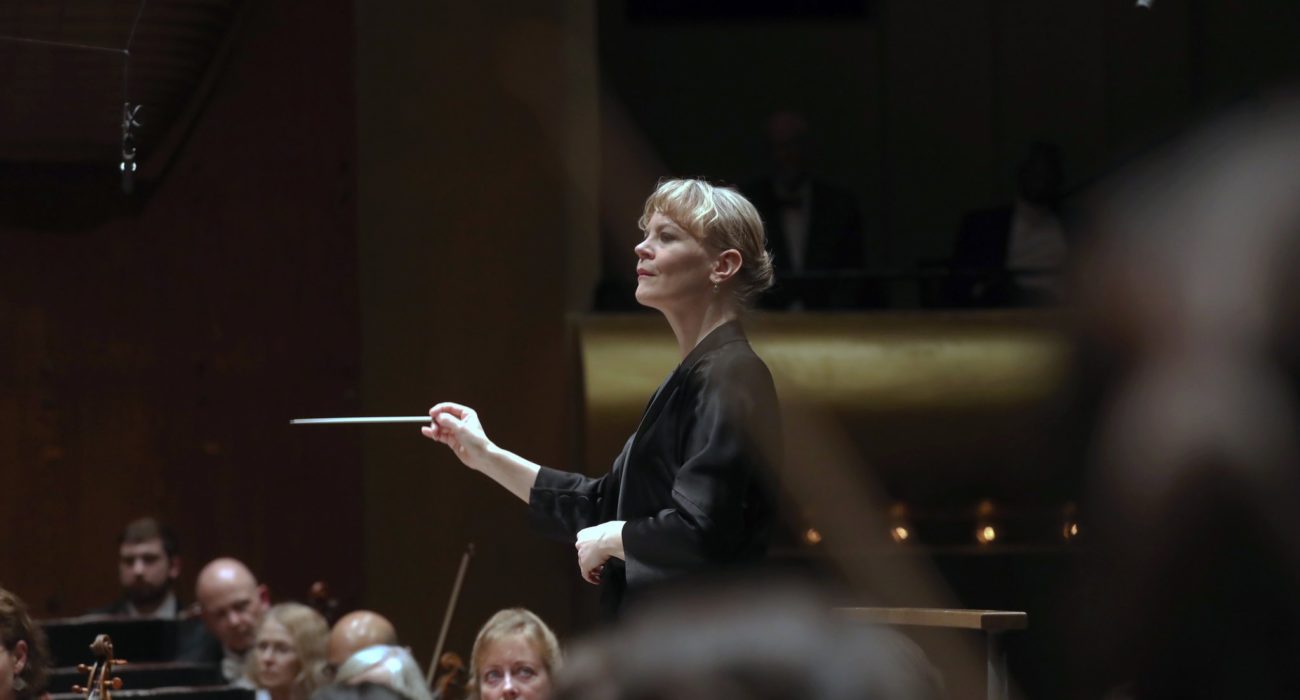On Thursday at David Geffen Hall, the Finnish conductor Susanna Malkki led the New York Philharmonic in a performance of the work that was so urgent, detailed and exciting that I forgot all about cresting sea and splashing waves. I was, instead, engrossed by the way Ms. Malkki brought out the colors, intricacies and radicalism of “La Mer”
“In Debussy’s “La Mer,” you can almost hear the heaving sea speckled with dawn sunlight, the dancing waves, the gusty winds.
That’s certainly the painterly, descriptive way audiences are often encouraged to think of this repertory staple. But on Thursday at David Geffen Hall, the Finnish conductor Susanna Malkki led the New York Philharmonic in a performance of the work that was so urgent, detailed and exciting that I forgot all about cresting sea and splashing waves. I was, instead, engrossed by the way Ms. Malkki brought out the colors, intricacies and radicalism of “La Mer” (1905), which came across as Debussy’s idea for an alternative kind of 20th-century symphony.
Ms. Malkki, making her return to the Philharmonic after a belated debut in 2015, certainly drew out the atmospheric sonorities in the subdued music the opens the piece, with the softly rumbling timpani, flecks of harp, heaving low strings and woodwind lines that seem to peek through the mist. But I was more struck by the unusual clarity of the textures, the careful voicing of chords to highlight pungent harmonies. In the final movement, Ms. Malkki deftly balanced the music’s tumultuous frenzy with symphonic majesty, driving headlong to the brassy climax without a trace of cinematic excess.
She preceded “La Mer” with the New York concert premiere of Esa-Pekka Salonen’s “Helix,” from 2005, which the composer has described as a nine-minute accelerando. The music starts tentatively, with halting chords, eerie blips and a strange, tolling bass riff. Moment by moment, this dark music gains intensity and volume, as jerky rhythms break out and fragments try to coalesce into phrases. It hurtles to a dizzying, blazing final stretch, played to the hilt here.
The concert began with a vanishingly rare sight at the Philharmonic: two women appearing together as concerto soloist and conductor. The brilliant Latvian violinist Baiba Skride gave a magnificent account of Tchaikovsky’s Violin Concerto. Her distinctive sound — full-bodied and sumptuous but never forced — ideally suited the passages of melting lyricism and nobility. She brought tender grace to the rueful slow movement. And, with the alert Ms. Malkki there to keep the orchestra right with her, Ms. Skride tore through the breathless finale with impetuous energy and impressive precision.
This season Ms. Malkki began her tenure as principal guest conductor of the Los Angeles Philharmonic. If only she had that post here in New York.”
Anthony Tommasini – The New York Times
“The New York Philharmonic welcomed busy Finnish conductor Susanna Mälkki to the podium and Latvian solo violinist Baiba Skride, for a stimulating program beginning with the Tchaikovsky Violin Concerto in D major …
Mälkki and soloist had an easy, collaborative rapport, and Skride paced her performance carefully, with ample reserves in store to sail into the energetic finale. In the long first movement’s mournfully yearning strains, she drew listeners in with caressing, pillowy tones. As the violin’s melodic flourishes reached ever higher into the stratosphere, Tchaikovsky seems to be exploring the frayed edges of nervous expression. Skride dazzled in the dizzying cadenza’s teetering tightrope walk of harmonics and glissandos.
The plaintive second movement was beautifully drawn, with delicately played dialogue between soloist and woodwinds, and the high drama of the third movement was riveting. Mälkki’s sharp attention to structure, and Skride’s boundless energy, built to spectacular effect. Mälkki led with a lucid, spirited baton, and concise, considered gestures. Her experience as an opera conductor was on display in the accompanied-recitative-like passages, tricky to coordinate with the violin solo …
The great French Impressionist Claude Debussy’s “symphonic sketches” La Mer (The Sea, from 1905) was a groundbreaking work in its day, a new kind of instrumental creation, neither purely absolute music, nor programmatic music in the Romantic sense. Debussy also bucked the traditions of how form and texture should play out orchestrally, and created a whole new range of possibilities that composers — especially including Hollywood film composers — have drawn on ever since. The score is like a plush Impressionist painting that looks more evocative from farther away, with rippling gestures that move through the orchestra to three-dimensional effect. The strings accent a chord, echoed by a burning swell in the horns. The layers upon layers of different rhythms stacking, rising, evolving.
Mälkki coaxed maximum virtuosity from the Philharmonic musicians, with heedful attention to dynamics, tight sense of time and tempo, and a clear vision for the entire canvas, brought Debussy’s lavish creation into crisp focus.”
Brian Taylor – ZealNYC
